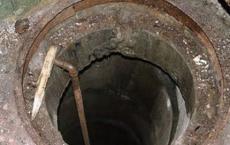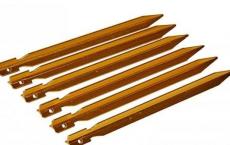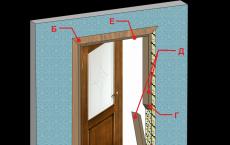How to choose a hidden wiring indicator
Replacing or repairing wires hidden under trim or frame structures requires caution: you do not always know exactly where a particular wire is and whether it is energized at the moment.
Even when you are repairing walls and ceilings and you need to make a hole in a particular place, there is no certainty that a wire or cable is not hidden under the plaster or gypsum fiber.
How to find hidden electrical wiring in the wall? There are several reliable ways related to the physical properties of the wires. Firstly, the wires are made of metal, which can be detected by special devices - metal detectors.
Secondly, wires can be live, and electromagnetic radiation detectors can detect the presence of current at a distance and with high accuracy. An overview of special equipment will help to expand knowledge about the possibilities of detecting hidden electrical wiring.
Types of equipment for searching hidden wiring
 Devices for detecting hidden electrical wiring have a special “trade name” - “metal and hidden wiring detectors”. The operation of the detector is based on the ability of materials to influence the electromagnetic field emitted by the device and the recognition of these influences.
Devices for detecting hidden electrical wiring have a special “trade name” - “metal and hidden wiring detectors”. The operation of the detector is based on the ability of materials to influence the electromagnetic field emitted by the device and the recognition of these influences.
According to the registered changes in the field, the device recognizes not only metals (ferromagnetic or non-ferrous), but also wood, and even a cavity inside the monolith. The accuracy of searching for objects hidden under a homogeneous material (including wiring) depends on the quality of the electronic "stuffing" of the device.
The simplest (and therefore less costly) electrostatic detectors are able to detect wires buried deep in walls (up to 6 cm), but only if the wire is energized.
The accuracy of determining the location of the wiring is quite high (up to 1 cm from the wire axis). A big drawback of the devices is the inability to work with damp and metal surfaces (wet or metal-plated walls).
In an apartment with dry walls, the device will perfectly determine the location of the wires, but it will not work for working in a garage or in utility (yard) buildings.
Electromagnetic detectors very accurately determine the location and depth of the wire, regardless of the humidity of the walls or metal obstacles, but only if the wire is energized and an electrical appliance with a power of more than 1 kW is connected to it.
Metal detectors are used to search not only for wires, but also for any metal objects hidden inside homogeneous environments. Accurately calibrated equipment can determine the type of metal (ferrous or non-ferrous), but will not answer the question of whether it is a wire and whether it is live.

A high-tech indicator for finding hidden wiring can detect foreign bodies or changes in the environment (voids or voltages), which also affect the electromagnetic field of the device, like metals, although to a lesser extent.
A highly sensitive detector will help you find a wooden frame or a plastic pipe inside the wall, determine the size of the object and its depth.
The usefulness of the "metal detector" is obvious if the repair is carried out in completely de-energized premises: it will help to draw up an accurate wiring map, detect all nails and fittings, point to voids in brick and concrete.
The most effective combined device for searching hidden wiring, which combines all three functions.
The addition of the indicators of the metal detector and the electrostatic detector will indicate that the object under the layer of plaster is precisely the wire, and not a piece of reinforcement.
And if the wall is wet, and electrostatics "does not work", the electromagnetic search method will help out.
Hidden wiring search technique
 Searching for hidden wiring using an electrostatic detector assumes that all wires must be energized, so first check with a tester for the presence of current in the network.
Searching for hidden wiring using an electrostatic detector assumes that all wires must be energized, so first check with a tester for the presence of current in the network.
The detector is calibrated (i.e. adjusted) on a section of the wall where there is no hidden wiring (and you are sure of it). Most simple detectors are equipped with an audible signal (speaker or headphone output), as the human ear is best at picking up pitch changes.
The beeper begins to increase in tone (and click frequency) as the instrument's antenna approaches a live wire. Manufacturers of more sophisticated equipment can add LED indication to the device, but it does not guarantee absolute accuracy.
An electromagnetic indicator for finding hidden wiring is a higher-class technique: especially advanced devices are equipped not only with a “beep”, but also with a liquid crystal screen with a “target indicator”, which shows the exact location of the wire under the device.
To work with the detector, preparation is required: to the outlet, the wire of which you are looking for under plaster or in a frame wall, you need to connect any electrical appliance with a power of more than 1 kW.
It is easiest to work with complex detectors. The high-class device is equipped with sensitive sensors and is able to analyze the received data. The metal detector will determine that metal is hidden in the thickness of the wall, electrostatics will tell you that this is a live wire.
The device can determine that the metal is non-ferrous (copper or aluminum) or ordinary iron, it will show the distance to the wire in millimeters. In professional detectors ("Bosch"), a laser pointer will show the direction of the laid cable.
How to find hidden electrical wiring in the wall? Competent electricians lay hidden electrical wiring strictly vertically and horizontally, which makes it easier to work with devices.

There is a socket or outlet for lighting, and it is logical to start searching for a wire from them. Each detector requires pre-calibration on a “blank”, unwired section of a wall or ceiling. The device is adjusted to the minimum level of electromagnetic fields.
Swipe over the intended location of the wiring. By changing the sound signal, you can easily determine at what point the conductor is located. The indication on the screen of the multi-detector (“multifunctional”) will add details: depth, material, presence of voltage.
Detection of hidden electrical wiring is not the only function of multi-detectors. The device has such sensitive sensors that it will indicate pipes (metal and plastic) hidden under concrete and voids.
If wires are embedded inside these hollow objects, the detector will determine their presence by the presence of electromagnetic radiation.
Detector selection
 The price range for devices for finding hidden wiring depends on the functionality and type of equipment. Therefore, the basis for the search is the type of wiring and the type of premises in which you want to carry out "search work".
The price range for devices for finding hidden wiring depends on the functionality and type of equipment. Therefore, the basis for the search is the type of wiring and the type of premises in which you want to carry out "search work".
An apartment or a private house, with dry walls and well-done electrical work, will not require particularly precise instruments.
More complex rooms (bathhouses or garages) can cause “absent-mindedness” in a simple device: an electrostatic conductor perceives a damp wall as a wire.
Simple and reliable electrostatic detectors are produced not only by world famous companies. The device brand E-121 "Woodpecker", manufactured in Ukraine, can determine the wire at a depth of up to 6-7 cm.
The accuracy of determining the location of a hidden wire is 0.5 cm along the axis. But it is more difficult to find it on sale than the products of Bosch, Black & Decker, Skil, Zircon.
Competition in the construction equipment market forces manufacturers to increase warranty periods, improve the quality and reliability of electronics.
The best indicators are devices marked "prof", for professional builders. These devices have an auto-calibration function, which is carried out several times a minute. Such a device determines metals at a distance of up to 10 cm, and corrugations with wires - up to 7 cm.
If you are sure that there are no "secrets" (unknown wires) in the walls, then take a simple electrostatic or budget electromagnetic detector. A multifunctional detector will make the work of a builder - a pro, not only easier, but also safer. Don't skimp on this technology.
Video about finding hidden electrical wiring using an indicator



